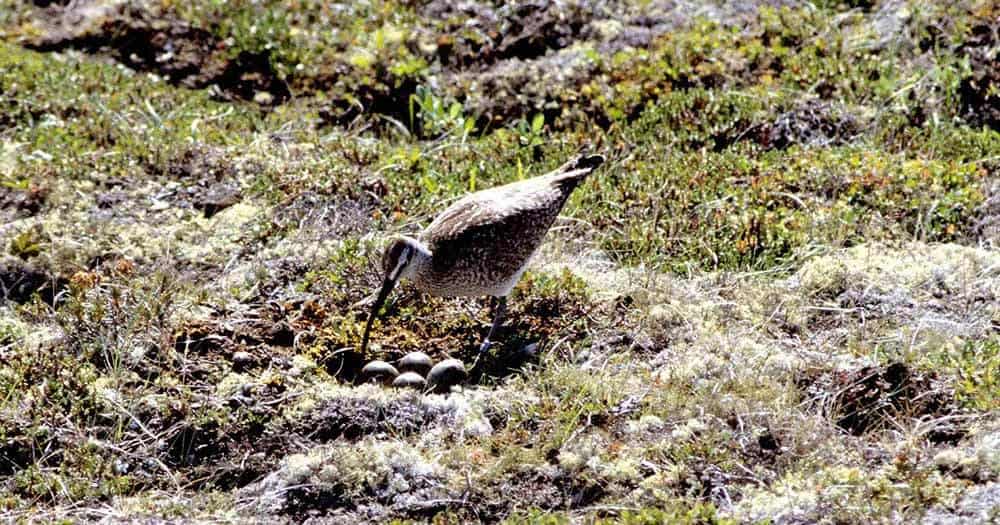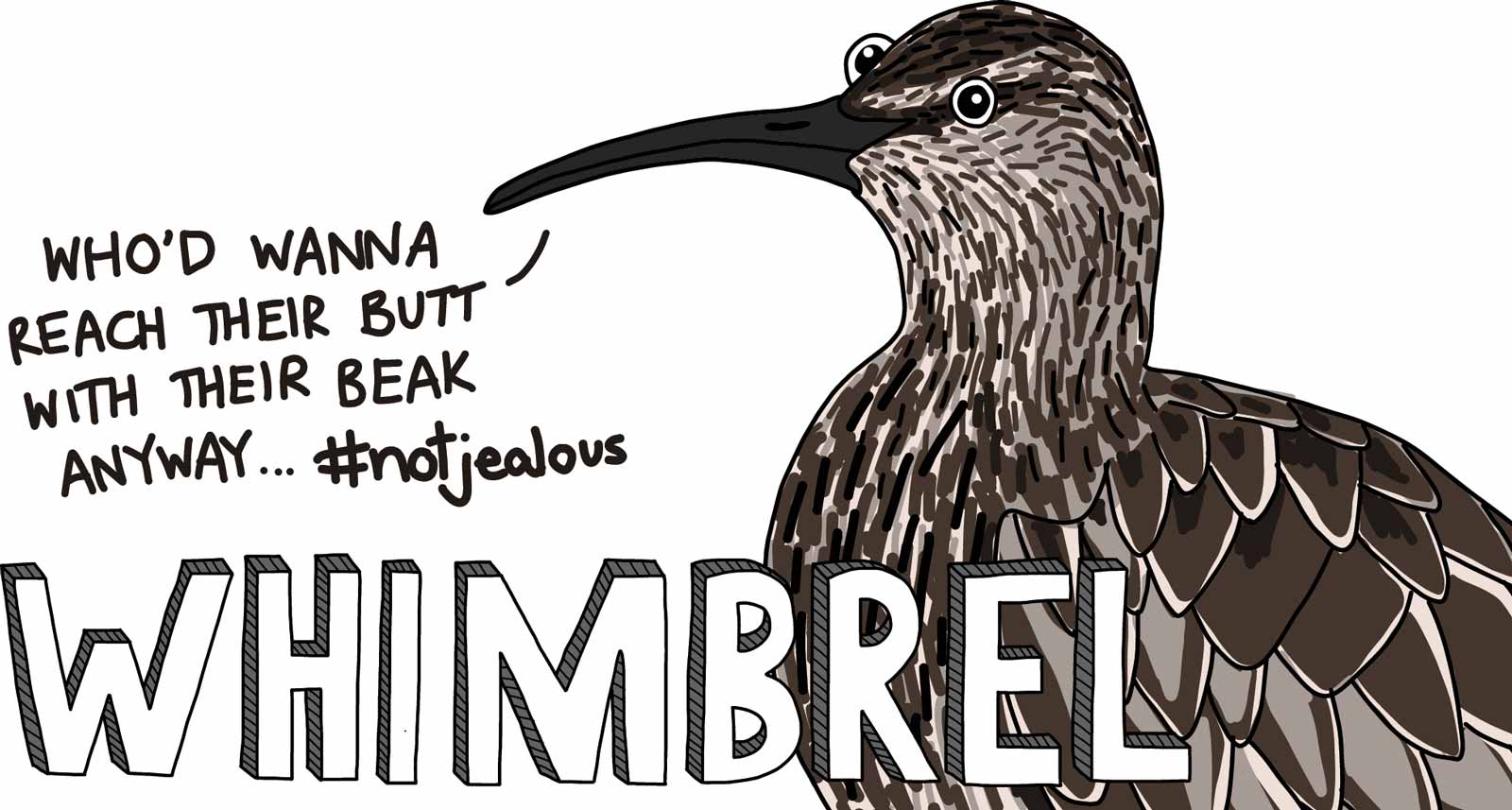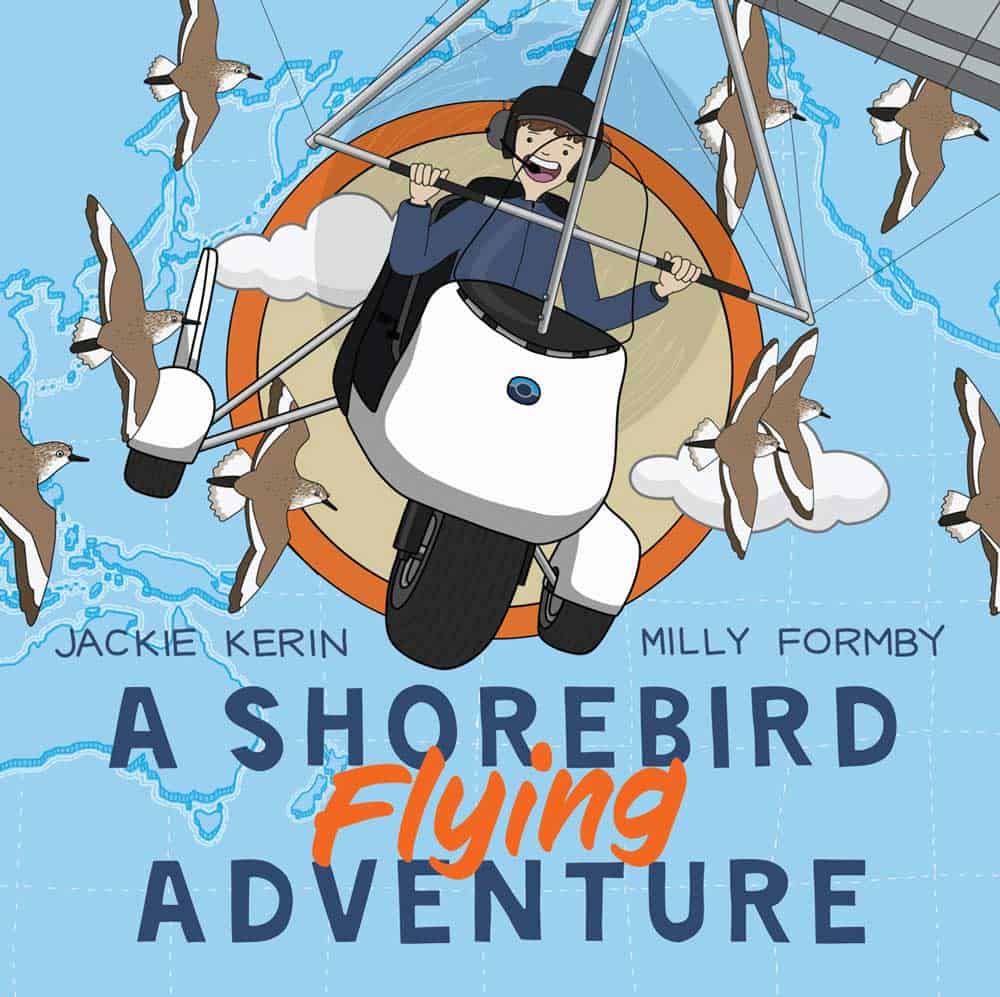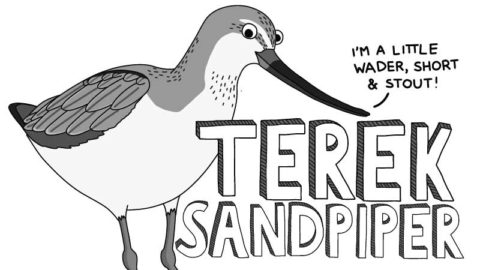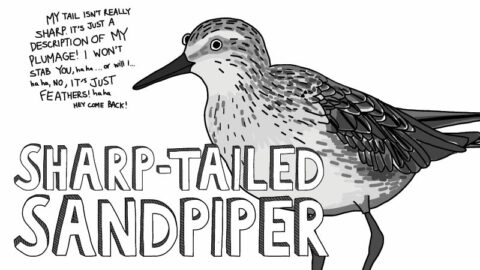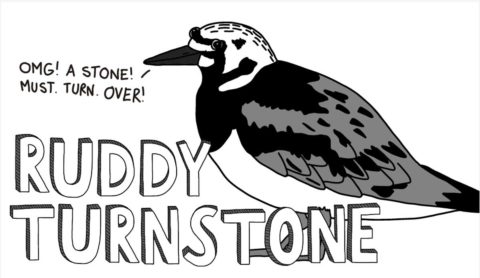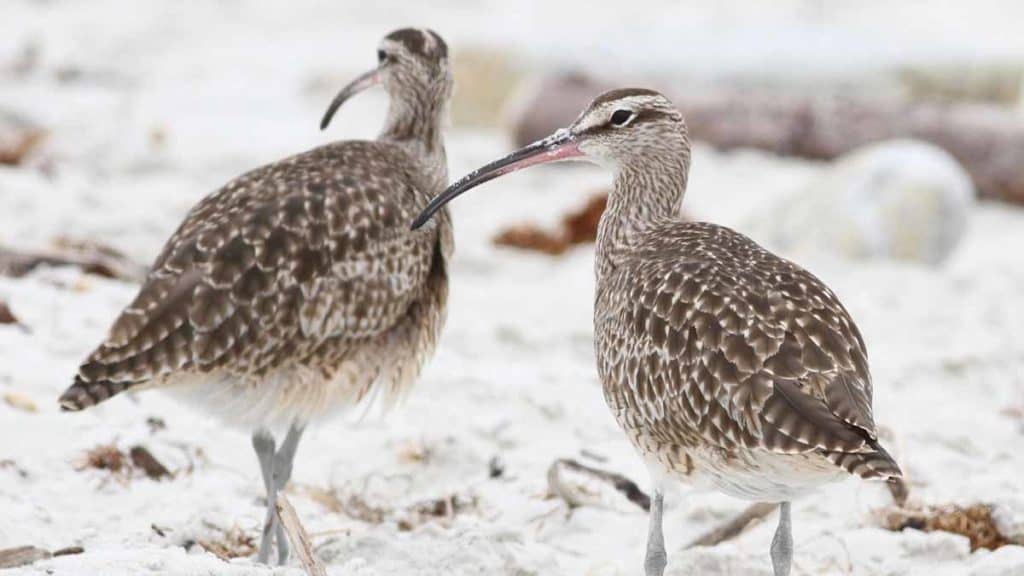
The Whimbrel, Numenius phaeopus, is a medium-sized wader in the curlew family. Whimbrels have a long neck and legs, and their bill curves slightly downwards. The legs are a dull, bluish-grey and the bill has a pink underside near the base.
A distinctive feature of the Whimbrel is the head pattern – two dark streaks across the crown with a paler stripe down the middle and a dark eye stripe. They have dark brown streaked wings and a mostly white chest and belly with brown marks. Juveniles can be differentiated from adults by their paler crown stripe and ‘spottier’ pattering on the wings.
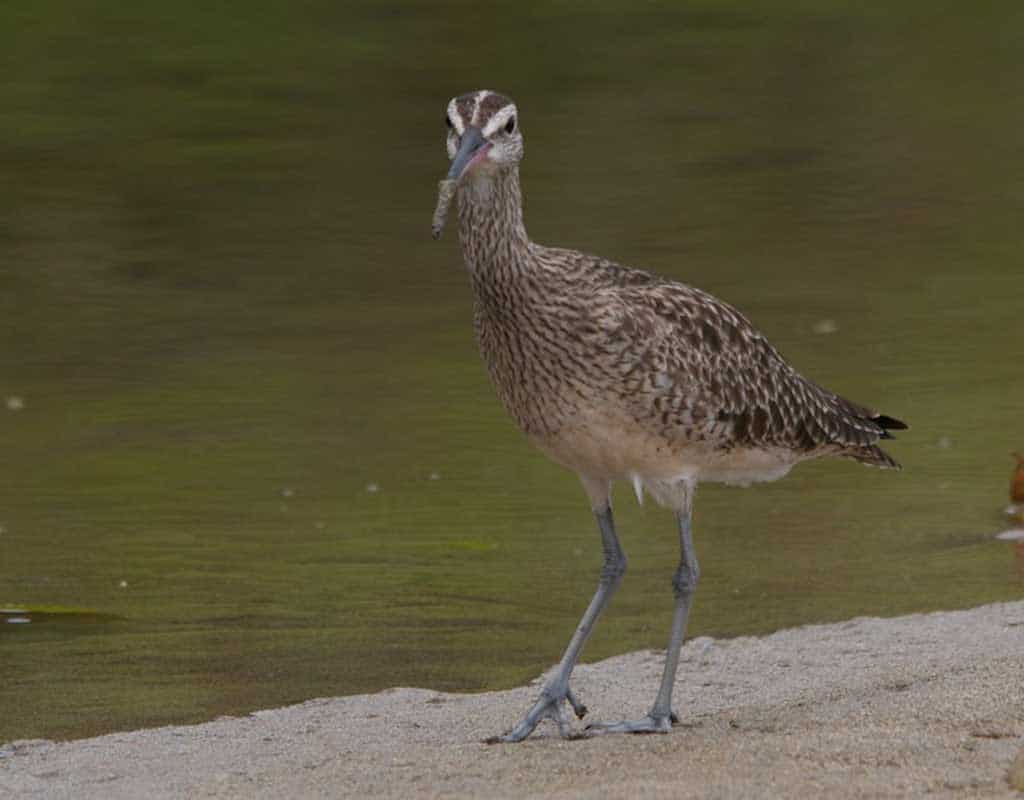
The size of the Whimbrel can be used to help distinguish it from other similar-looking curlews; it is bigger and has a thicker, longer bill than the Little Curlew, Numenius minutus, but is smaller and has a shorter bill and legs than the Eastern Curlew, Numenius madagascariensis.
A fun way to distinguish the Whimbrel from the Eastern Curlew is to imagine if its head was turned around 180 degrees. If its bill is too short to reach its butt with its beak, its a Whimbrel!
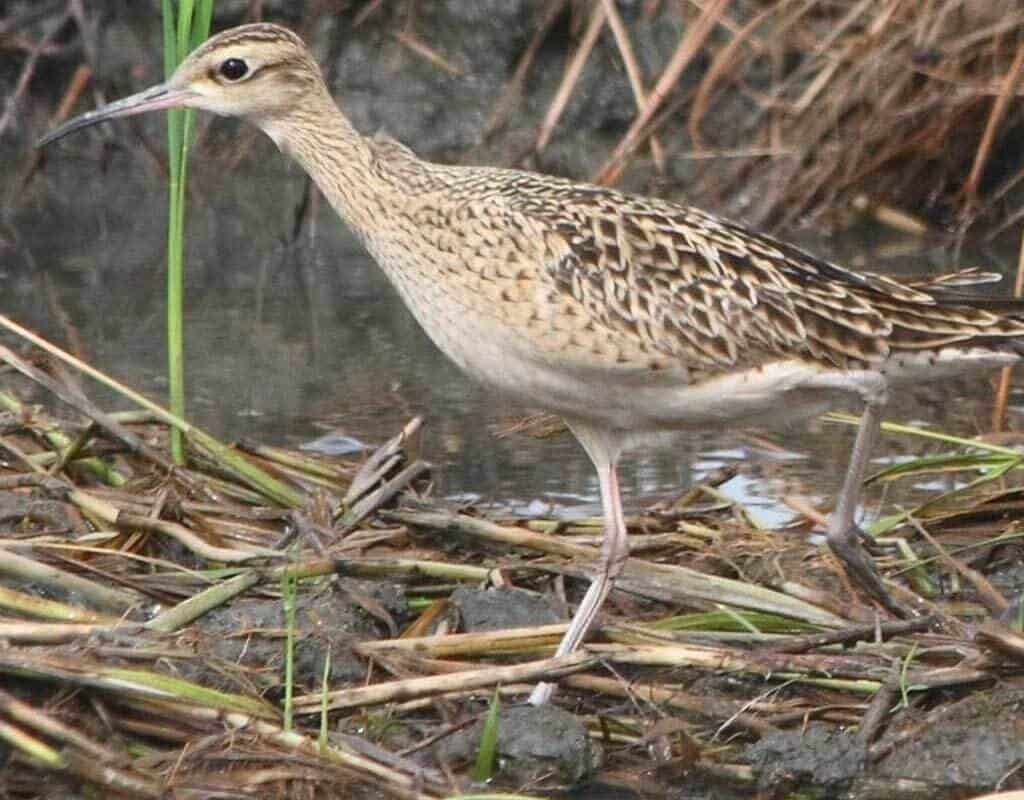
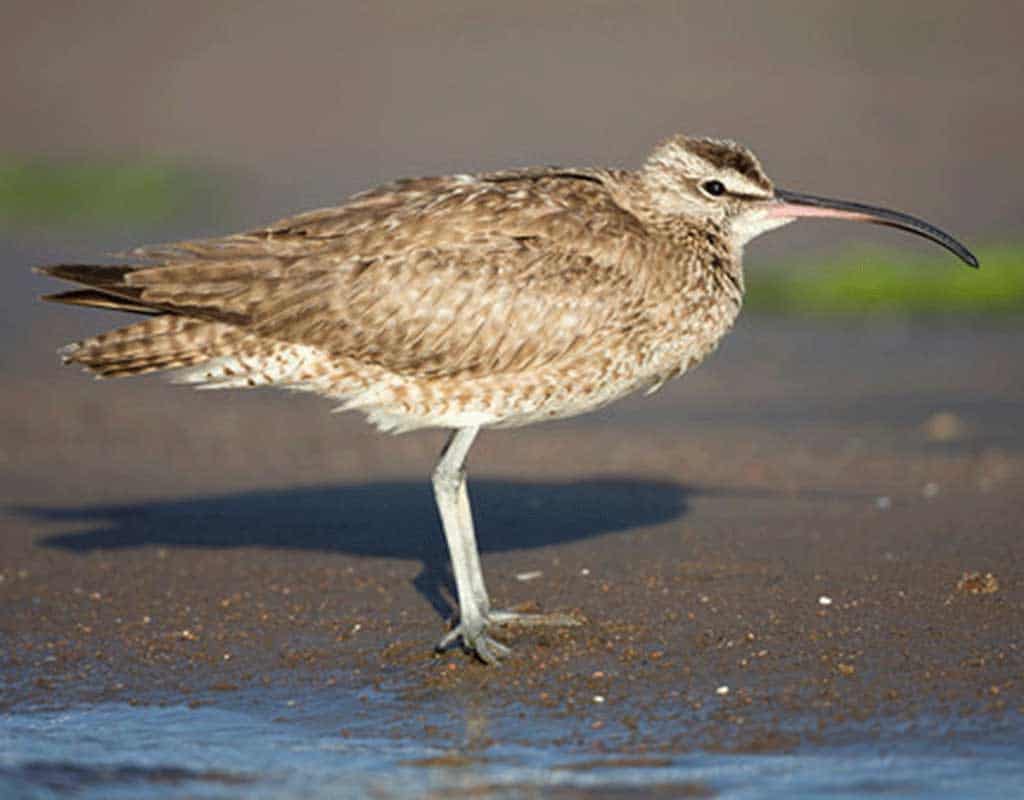
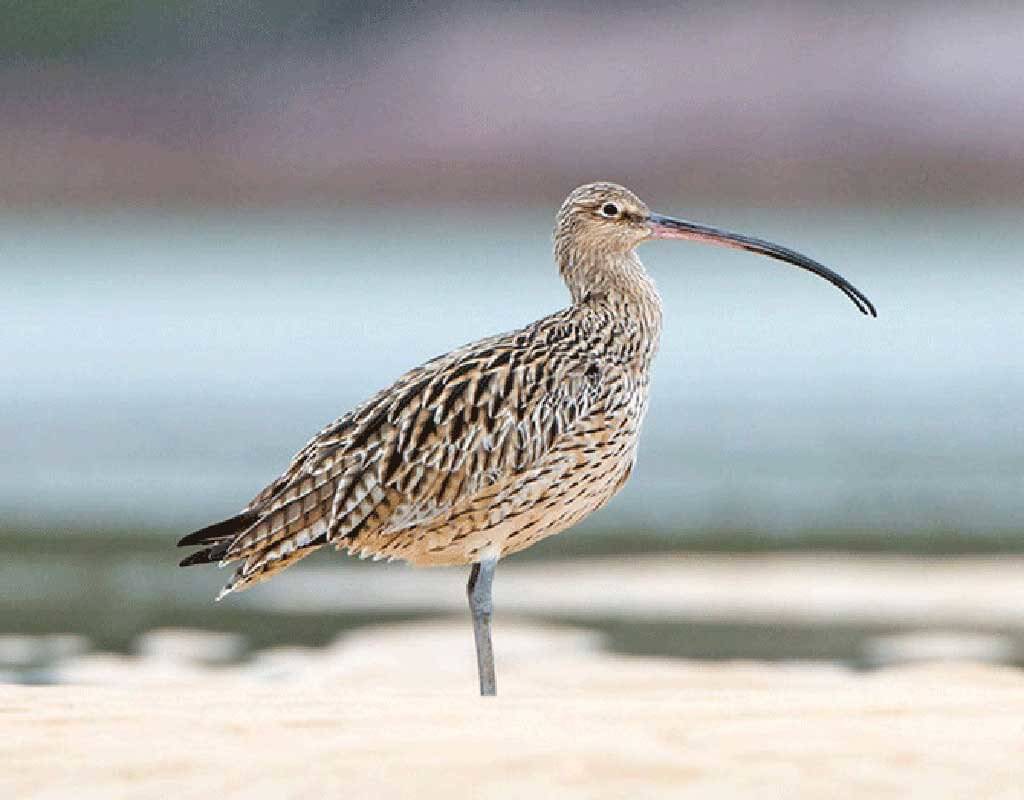
Feeding by day and night, Whimbrels run rapidly and use their curved beak to quickly probe small spaces and peck at the surface. Their diet of choice consists of crustaceans, worms and, infrequently, small vertebrates such as fish and nestling birds.
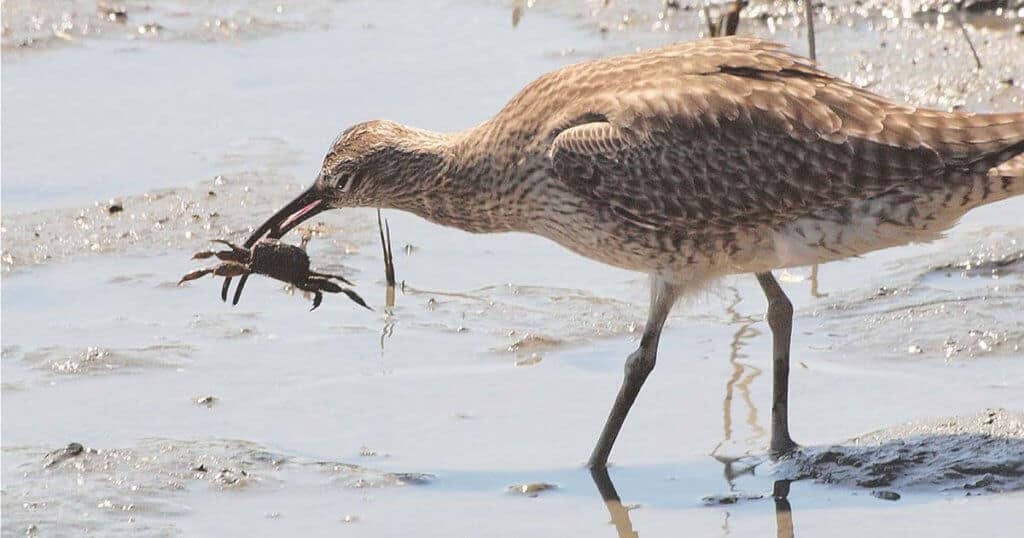
Whimbrels are primarily found around the coast and are more common in Northern Australia. Whimbrels are usually found on sandy and rocky beaches, and intertidal mudflats and reefs, as well as lagoons and estuaries, preferably those with mangroves.
Breeding grounds for the Whimbrel span the Arctic Circle, including Siberia, Alaska and Iceland. Males partake in flight displays over their nesting territories, rising high and falling, while calling to attract females.
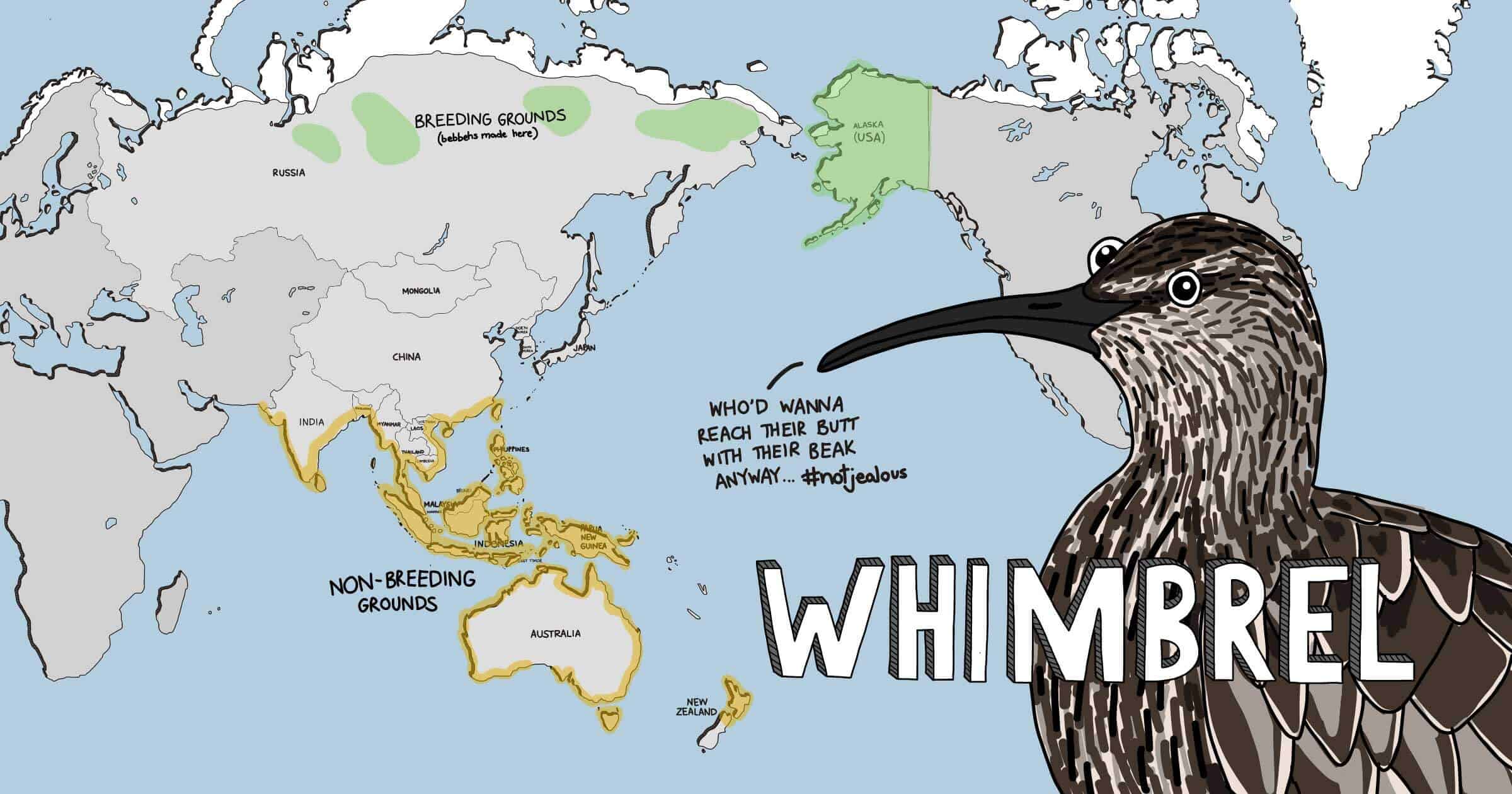
Whimbrels build nests in higher areas, such as the branches of mangroves and tall coastal trees. They will also nest on the ground in depressions lined with vegetation, which increases their risk of predation. Clutches normally consist of between two to five – most commonly four – well-camouflaged speckled eggs.
